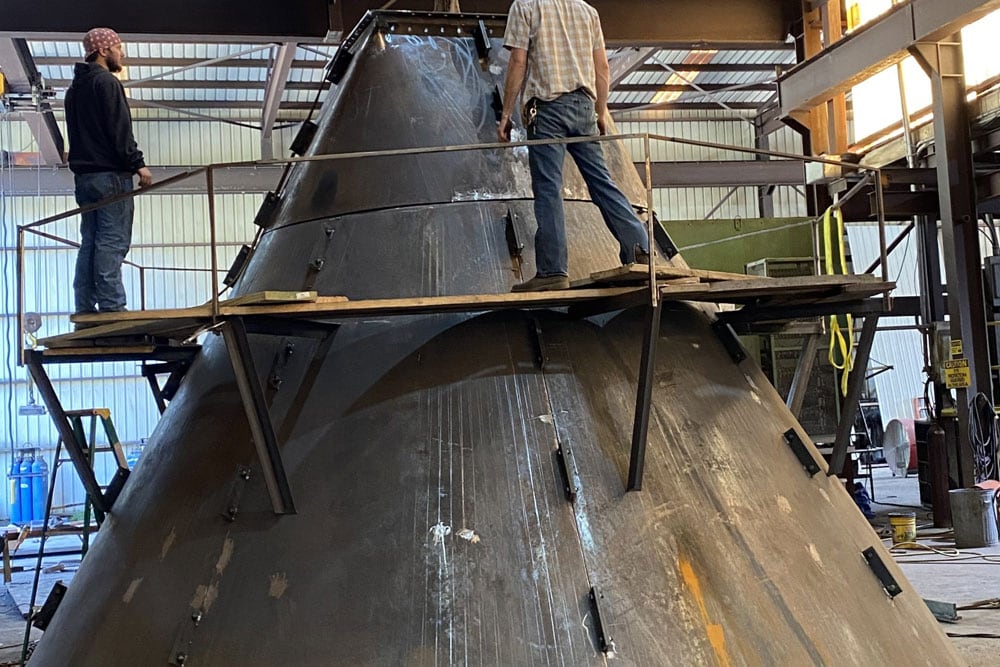Industrial steel fabrication includes different forms of metal fabrication and custom manufacturing. It includes forming a steel cone using carbon steel, stainless steel, aluminum, or other thick enough alloys to form them into a cone effectively.
The process of creating a steel cone is called metal forming, which Fabrication Services Inc. offers. There are two ways you can form a metal. The first uses heat to the metals to soften them. After that, it will increase the malleability and reduce the stress on the material’s grain structure. The second one is by cold rolling, which uses more force but leaves the metal with a more appealing finish.
Here are two types of reducer steel cones and a step-by-step guide to giving you more details about forming custom steel cones.
Two types of reducer steel cones
Steel cones are used in many industries for a variety of purposes. They are applicable for pipe reducers/increasers, transitions, funnels, chutes, and hoppers. Currently, FSI can form reduced cones, namely concentric reducer cones and eccentric reducer cones.
- Eccentric reducer cones have one side of the cone larger than the other, and these are perfect for when liquid is running through the cones since the design prevents air bubbles from building up in the system.
- On the other hand, concentric reducer cones have both sides of the cone equal to each other. Concentric reducer steel cones are more popular because they evenly disperse the weight and pressure placed on them, resulting in a more durable and longer-lasting product.
Eccentric and concentric reducer cones are used for different purposes depending on the application. But they’re most commonly used when you need a piping system between two openings.
How to create steel cones
Creating a steel cone involves several processes to ensure that the product or result is perfect. These steps ensure that the product meets the preference and exceeds the client’s expectations.
1. Get the correct dimensions of the steel cone
The first step involves knowing the dimensions of the steel cone. So you have to get the thickness of the material, the minor and major diameters, and the height of the cone. These numbers are essential so that the steel cone will fit perfectly for its intended purpose. You can get these dimensions by measuring the opening or using a ruler or caliper.
2. Create a CAD drawing of the layout
Once the cone’s thickness, diameter, and height are available, create a CAD drawing of the cone to get a flat layout. After that, a plasma-cutting or flame-cutting machine burns the layout out to shape.
3. Formed using a plate roll & a 1,000-ton hydraulic brake press
Once the burned-out shape is available, a brake press forms the steel cone. It rolls the plate with a plate roll.
FSI uses both 2″ and 5/8″ Bertsch plate rolls for superior precision. It’s also used for materials with a variety of thicknesses and outside diameters:
- Maximum thickness, 2″ plate roll: Down to 30″ OD
- Maximum thickness, 5/8″ plate roll: Down to 18″ OD
- Maximum rolling width: 10′ (with the option for thicker plates of narrower widths)
- Max forming diameter: 15′ due to FSI’s hook height
After that, a 1,000-ton hydraulic brake press forms the plate. It’s a 16′ bed that can handle up to a 4″ plate.
Choose a knowledgeable & expert metal fabrication in the industry
Fabrication Services Inc. is an industry leader in terms of metal forming and fabrication. We are ready to meet your needs for whatever purpose they may serve you.
You may contact us, and we’ll help you find the appropriate service depending on your needs. You can also request a quote, and we’ll send you the details.

